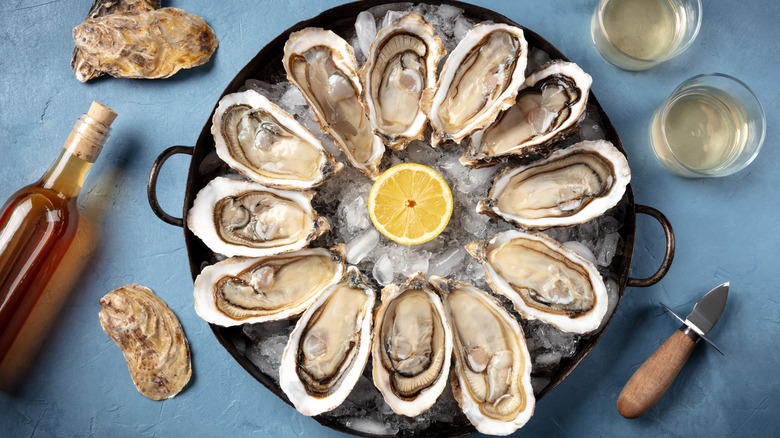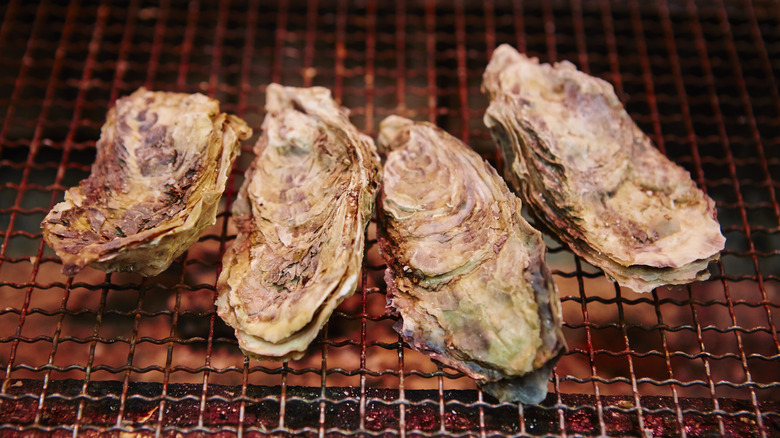Broil Your Oysters For Easier Shucking
There's a valid reason why oysters, the bivalve species often seen shimmering in their half shells atop an icy platter, have become culinary delights and menu staples for many. Part of the pleasure in consuming oysters is the actual eating process — wielding your tiny fork to loosen the mollusk and then slurping it down with delight. The other enjoyment comes from shucking your oyster or strategizing exactly how to extract it from its shell. You can always stick to pre-shucked oysters when dining out, but shucking them yourself and working for your pay (a delicious oyster in a bed of brine) may be easier and more rewarding than you think.
The simple act of broiling your oysters in the oven can coax them to open just enough for you to maneuver your oyster knife into the hard shell. From there, you can finish the shucking process with ease and wow your guests in the process. Unlike the classic oysters Rockefeller, in which the oysters are cooked, oyster broiling is a shucking strategy rather than a cooking technique and will leave the oysters tender and juicy.
How to broil your oysters to coax them open
While you wait for your broiler to heat, lay your precious bivalves on an oven-safe tray, such as a sheet or roasting pan. Keep your oysters with the flat side (top shell) facing up, then into the oven your oysters go. When broiling on high heat, your oysters require as little as five minutes before they'll start to peek open. A word to the wise: The more stable your oysters are on their tray, the less likely they are to leak their precious brine as they start to unlatch when cooking, so arrange them wisely.
For the final flourish, remove your now-ajar oysters from the oven and start shucking with an oyster knife. While you won't need to worry about painful knife injuries caused by struggling to pry open the shell, you may still want to protect yourself from the heat of the freshly-broiled oyster. A simple kitchen towel is an adequate defense as your oysters cool down. One final word of caution is to discard any oysters that stay shut after 10 minutes under the broiler. A closed shell can be a sign that the oyster has gone bad and that eating it may cause infection. Finally, you can reap the rewards of your efforts — in this case with a briny oyster, possibly a mignonette sauce or squeeze of fresh lemon juice, and some good company.

